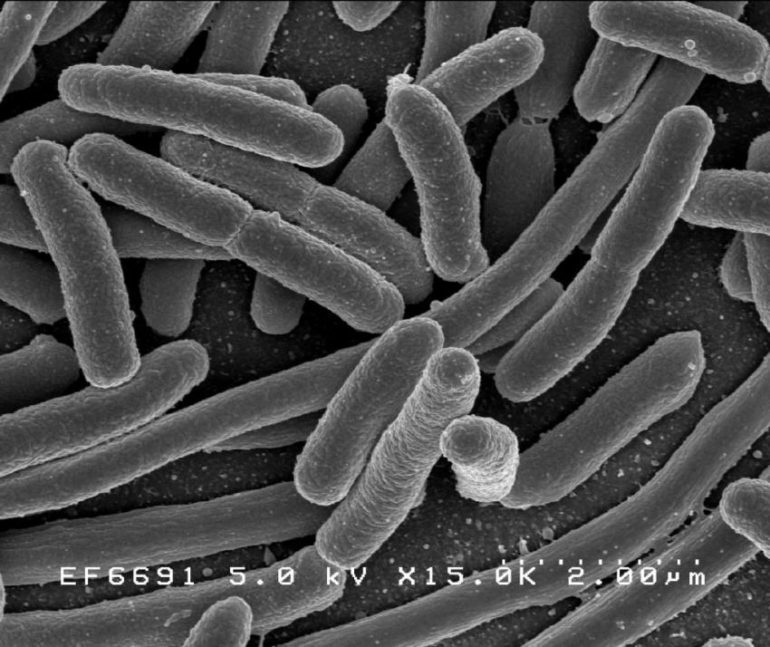Antibiotic resistance in E. coli has been steadily increasing since the early 2000s despite attempts to control it, a new study suggests. In the biggest genomic survey of E. coli to date, that took more than 16 years in Norway, researchers have successfully tracked the spread of antibiotic resistant genes and have shown that these genes are being transferred between E. coli strains.
Researchers from the Wellcome Sanger Institute and University of Oslo have tracked multidrug resistance in Norway and compared this to a previous study from the UK. They found that resistant strains developed around the same time, but increased more rapidly in the UK population.
The results, published today in The Lancet Microbe show that tracking these resistant strains is important in the surveillance and control of drug resistant E. coli, which poses a significant issue in hospitals where it can cause severe infection and mortality. In addition, understanding how these genes are transferred between strains, and what has caused them to acquire drug resistance can help prevent the growth of antibiotic resistance strains.
The bacterium, Escherichia coli is a common cause of bloodstream infections world-wide*, which seem to be increasing over the last decade. E. coli is commonly found in the gut, where it does not cause harm, but if it gets into the bloodstream due to a weakened immune system it can cause severe and life threatening infections. As an added challenge for health care providers, multi-drug resistance (MDR) has become a frequent feature of such infections, and in a worrying number of cases the available treatment options are becoming limited.
In the largest study of its kind, and only the second systematic longitudinal genomic study of bacteremia E. coli, researchers from the Wellcome Sanger Institute and the University of Oslo processed a nation-wide catalogue of samples from more than 3,200 patients to track antibiotic resistance over 16 years. By harnessing the power of large-scale DNA sequencing, they tracked the emergence of drug resistance and compared this to a similar study conducted in the UK**.
The team found that MDR started to increase and show in more strains in the early 2000s due to antibiotic pressure, and now multiple MDR E. coli strains are present in Norway. However, MDR E. coli seems to be more widely present in the UK, despite similar policies in place around antibiotic use. The UK population however is considerably larger than Norway which could explain some of the differences. Further research is needed to allow for closer comparison and to identify the exact factors that cause rapid spread in some locations compared to others.
MDR is relatively rare in bacteria. However, this new study has identified that lineages that previously were not thought to have MDR have acquired drug-resistance genes, showing the increased ability of E. coli to share MDR genes that move horizontally between strains.
Professor Jukka Corander, co-author and Associate Faculty member at the Wellcome Sanger Institute, said: “The high number of samples from the Norwegian population and the level of genomic detail on the strains of bacteria enabled us to make much more far-reaching conclusions than were ever possible before. This study demonstrates the power arising from a systematic national surveillance of resistant organisms, which both collects and makes the data available for in-depth analyses. Without these in place, it would have been impossible to approach the central research questions formulated in the study and find answers to them.”
The researchers hope to conduct similar research in the UK to build on previous studies and gain a full data set of 16 years in the UK in order to more closely track MDR resistant E. coli.
Dr. Rebecca Gladstone, lead author of the study and Bioinformatician at the University of Oslo, Norway, said: “Being able to estimate the expansion timelines of the MDR clones of E. coli and to identify multiple occasions of novel acquisition of resistance genes is particularly exciting as this is the first time that this has been possible. Understanding and tracking the movement of these drug resistance genes and the strains that carry them are necessary for controlling the spread of drug-resistant bacteria, which is a huge issue in healthcare.”
Professor Julian Parkhill, co-author and Professor in the Department of Veterinary Medicine at University of Cambridge, said: “Long-term studies such as this one provide in-depth understanding about the complex epidemiology underlying bloodstream infections. The next step would be further research to detail the factors determining the success of emerging pathogenic clones of these bacteria, to help find a way to control and possibly minimise the spread of multidrug resistance.”
Campylobacter strains exchange genes, can become more virulent and antibiotic resistant
More information:
The Lancet Microbe, www.thelancet.com/journals/lan … (21)00031-8/fulltext
*Kern WV, Rieg S. (2020) Burden of bacterial bloodstream infection – A brief update on epidemiology and significance of multidrug-resistant pathogens. Clin Microbiol Infect; 26: 151-7.
**Teemu Kallonen et al. Systematic longitudinal survey of invasiveEscherichia coliin England demonstrates a stable population structure only transiently disturbed by the emergence of ST131, Genome Research (2017). DOI: 10.1101/gr.216606.116
Provided by
Wellcome Trust Sanger Institute
Citation:
Identifying the rise of multi drug resistant E. coli (2021, May 10)
retrieved 10 May 2021
from https://phys.org/news/2021-05-multi-drug-resistant-coli.html
This document is subject to copyright. Apart from any fair dealing for the purpose of private study or research, no
part may be reproduced without the written permission. The content is provided for information purposes only.
